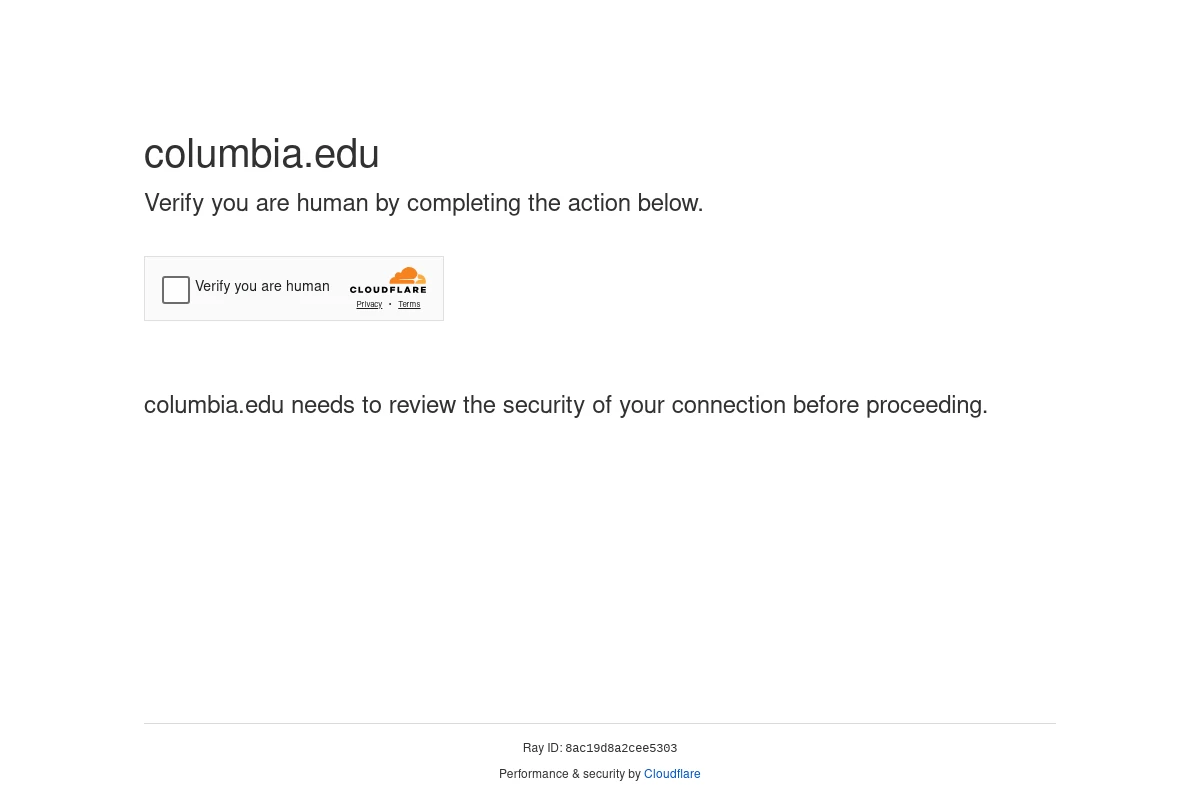Columbia Webmail SignUp/Login Guide

columbia.edu offers webmail services for Columbia University staff and students, ensuring secure and efficient email communication. Access your columbia.edu Webmail account smoothly with our detailed sign-up and login instructions.

columbia.edu: Features and Benefits
Columbia Webmail provides a range of features and benefits designed to enhance your email experience:
- Security: Advanced security measures protect your email data and ensure safe communication.
- Efficiency: Reliable and efficient email service with minimal downtime.
- User-Friendly Interface: An intuitive interface makes managing your emails straightforward and simple.
- Large Storage Capacity: Plenty of space to store your emails and attachments without worrying about running out of space.
- Accessibility: Access your emails from any device, anywhere in the world, ensuring you stay connected on the go.
- Integration: Seamless integration with other Columbia University online services.
columbia.edu: How to Sign Up
Creating a Columbia Webmail account is simple. Follow these steps to sign up:
- Visit the Columbia Webmail Sign Up Page: Go to the official Columbia Webmail sign-up page at columbia.edu sign-up.
- Fill in Your Information: Enter your personal details, including your name, Columbia University ID, and password.
- Agree to the Terms and Conditions: Read and accept the terms and conditions.
- Verify Your Email: Check your inbox for a verification email from Columbia and click the verification link.
- Complete the Registration: Follow the on-screen instructions to finalize the registration process.
- Set Up Your Profile: Customize your profile by adding additional information and preferences.
columbia.edu: How to Sign In
Accessing your Columbia Webmail account is easy:
- Go to the Columbia Webmail Login Page: Navigate to the official login page at columbia.edu login.
- Enter Your Credentials: Input your registered email address and password.
- Click 'Sign In': Click the sign-in button to access your account.
- Two-Factor Authentication: If enabled, enter the code sent to your mobile device.
columbia.edu: IMAP/SMTP Settings
Use these settings to configure your email client for Foxmail Webmail:
IMAP Settings
| Setting | Value |
|---|---|
| Host: | imap.columbia.edu |
| Port: | 993 |
| Encryption: | SSL/TLS |
| Username: | your_username@columbia.edu |
| Password: | your_password |
SMTP Settings
| Setting | Value |
|---|---|
| Host: | smtp.columbia.edu |
| Port: | 465 |
| Encryption: | SSL/TLS |
| Username: | your_username@columbia.edu |
| Password: | your_password |
columbia.edu: Troubleshooting
Encountering issues with your Columbia Webmail? Here are some common problems and solutions:
- Cannot Sign In: Ensure you are using the correct email address and password. If you’ve forgotten your password, use the 'Forgot Password' feature to reset it.
- Email Not Sending/Receiving: Check your SMTP and IMAP settings. Ensure your internet connection is stable.
- Account Locked: If your account is locked due to suspicious activity, contact Columbia IT support for assistance.
- Spam/Junk Mail Issues: Adjust your spam filter settings and ensure important emails are not being marked as spam.
columbia.edu: Pros and Cons
Pros:
- High security ensures your email communications are protected.
- Reliable performance with minimal downtime.
- User-friendly interface simplifies email management.
- Large storage capacity for emails and attachments.
- Seamless integration with Columbia University online services.
Cons:
- Limited customization options compared to other email services.
- Initial setup may be complex for some users.
columbia.edu: Conclusion
Columbia Webmail is a reliable and user-friendly email service that offers strong security and seamless integration with other Columbia University services. By following this comprehensive guide, you can easily sign up and log in to your Columbia Webmail account, ensuring a smooth and efficient email experience. Whether you're managing personal or professional communications, Columbia Webmail provides the tools and reliability you need to stay connected.